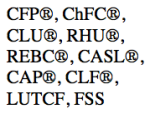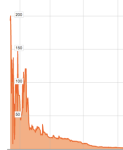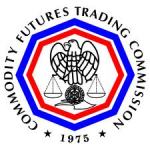 Former Chase banker Javier Echeverria has an interesting new method of generating banking revenues – one that has industry observers divided. Here is the method, as reported by Finra:
Former Chase banker Javier Echeverria has an interesting new method of generating banking revenues – one that has industry observers divided. Here is the method, as reported by Finra:
On or about October 5, 2012, Chase Bank customer MJ accidentally left her wallet at the Tarrytown Branch Office while conducting banking activities. A Chase Bank employee found the wallet and turned it in to Echeverria. Echeverria placed the wallet in a locked drawer at the Tarrytown Branch Office. When MJ did not claim the wallet by the close of business on October 5, 2012, Echeverria retrieved the wallet from the locked drawer and removed from it $1,050 in cash for his personal use.
While admirably expedient, not everyone applauds this transaction:
“At some banks, it’s considered bad form to take cash directly from clients’ wallets,” said a compliance expert, familiar with the case. “Rather, bankers are supposed to use only firm-approved methods of getting at client cash – you know, commissions, advisory fees, markups, margin interest, spreads, sales loads, overdraft fees, proprietary trades with clients, and the like,” he added.

A client makes a deposit.
Another observer disagrees, seeing the Echeverria transaction as beneficial to customers:
“Look, he could have sold her a variable annuity and earned a commission of $1,050, right? And Finra would be fine with that, right? Either way she’s out the $1,050, but here she is spared the additional cost and hassle of having assets tied up in a variable annuity,” said a former Lehman Brothers advisor. “She came out ahead, thanks to Echeverria.”
A former banker concurs, noting that Echeverria’s method is just a simple variation on how the bank itself makes money:
“According to Finra, four days after Echeverria removed the funds for personal use, he wrote a cashier’s check payable to ML’s account for $1,050. So he was doing what all banks do. Clients leave money. The bank uses it. If the client requests it back, the bank returns it. Simple as that. Sure, it might have been better if Echeverria had added a small amount of interest, but hey, there’s no reason for the customer to be getting greedy here,” said a former banker from IndyMac Bank.
Finra did not agree with Echeverria’s method. In its settlement with him, Finra accused him of “conversion,” which Finra tells us is “the unauthorized and wrongful exercise of dominion and control over another’s personal property to the exclusion of or inconsistent with the rights of the owner.” According to a footnote, Finra got this definition of conversion from Black’s Law Dictionary, the 5th Edition, from 1979.
“Conversion? Okay, maybe so,” said a professor of securities law, “but why can’t Finra afford a fresher edition of Black’s Law Dictionary? It’s bad enough they keep citing statutes from 1933, 1934, and 1940, but the disco-era version of Blacks? That’s too much.”
By Letter of Acceptance, Waiver and Consent, Javier agreed to a bar from association with any Finra-regulated firm, putting an unmistakable damper on this sort of transaction in the future (No. 2012034616801).
Published by Jeremy L. Bartell
 Financially Regulated is published by Jeremy L. Bartell, a long-time admirer of Wall Street and its interesting cast of regulators. Jeremy is an attorney with Bartell Law in Washington D.C. He represents financial professionals nationwide in Finra inquiries and investigations, Finra arbitration, securities employment disputes and registration and disclosure matters.
Financially Regulated is published by Jeremy L. Bartell, a long-time admirer of Wall Street and its interesting cast of regulators. Jeremy is an attorney with Bartell Law in Washington D.C. He represents financial professionals nationwide in Finra inquiries and investigations, Finra arbitration, securities employment disputes and registration and disclosure matters.























What do you think?